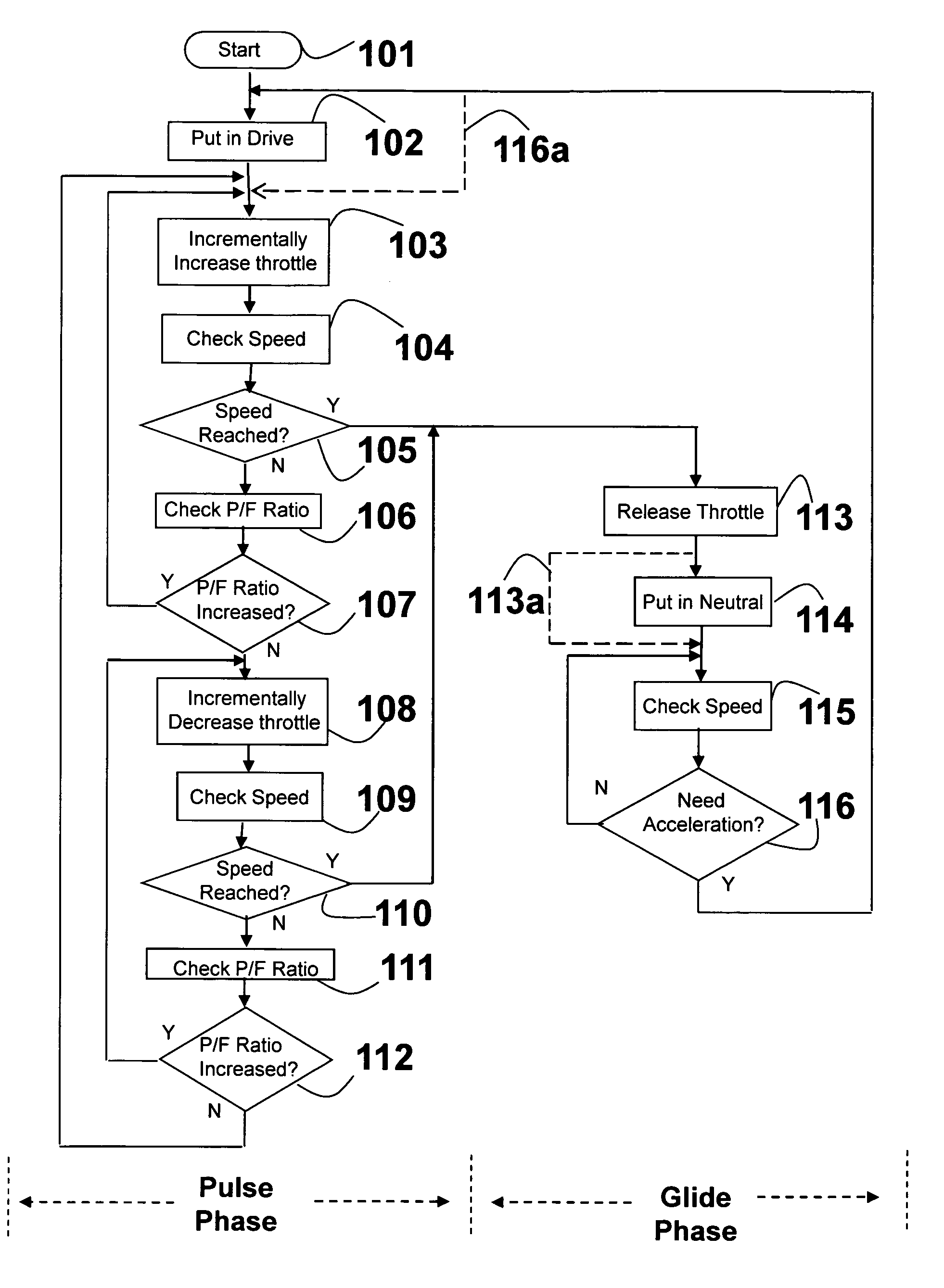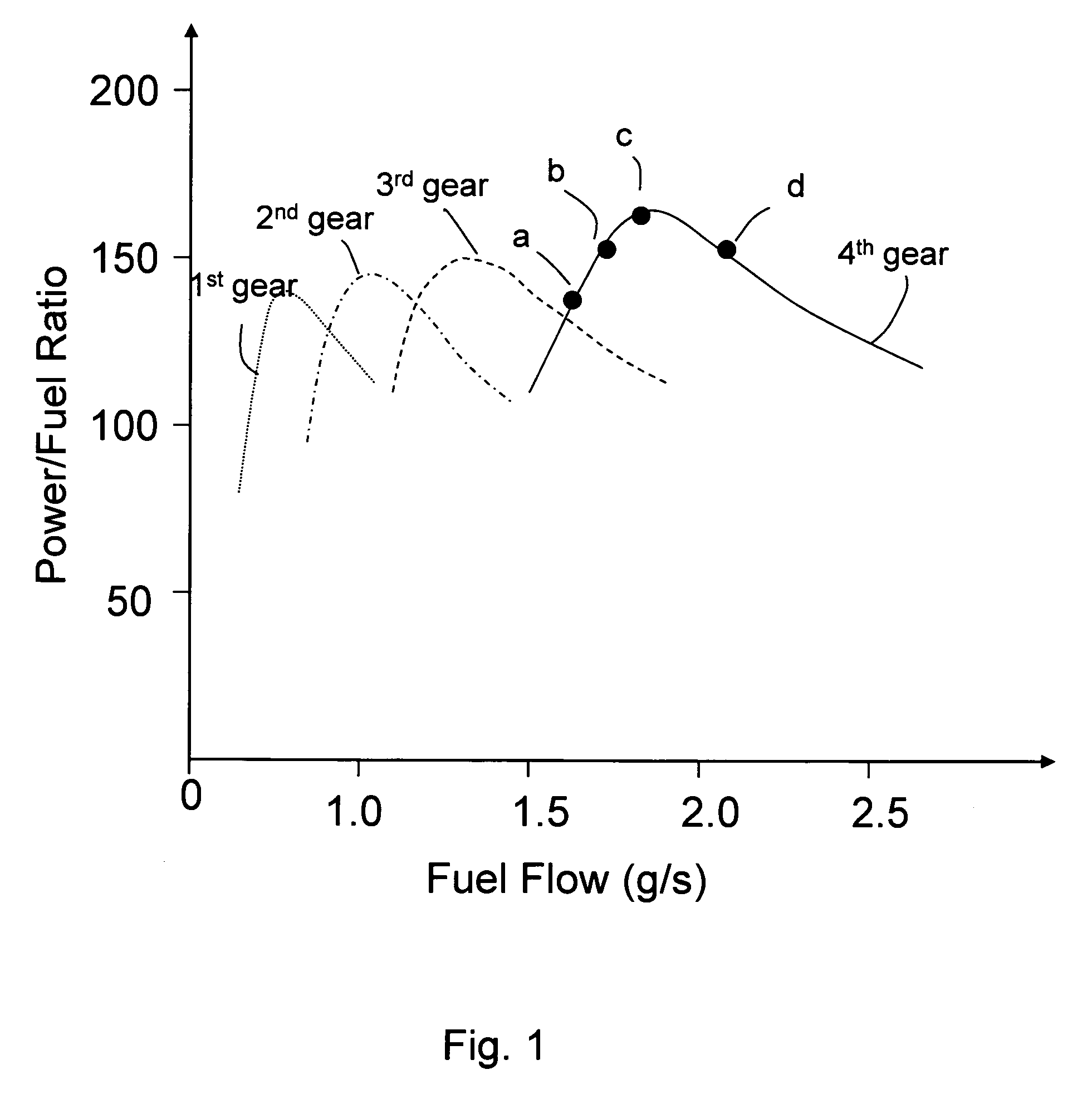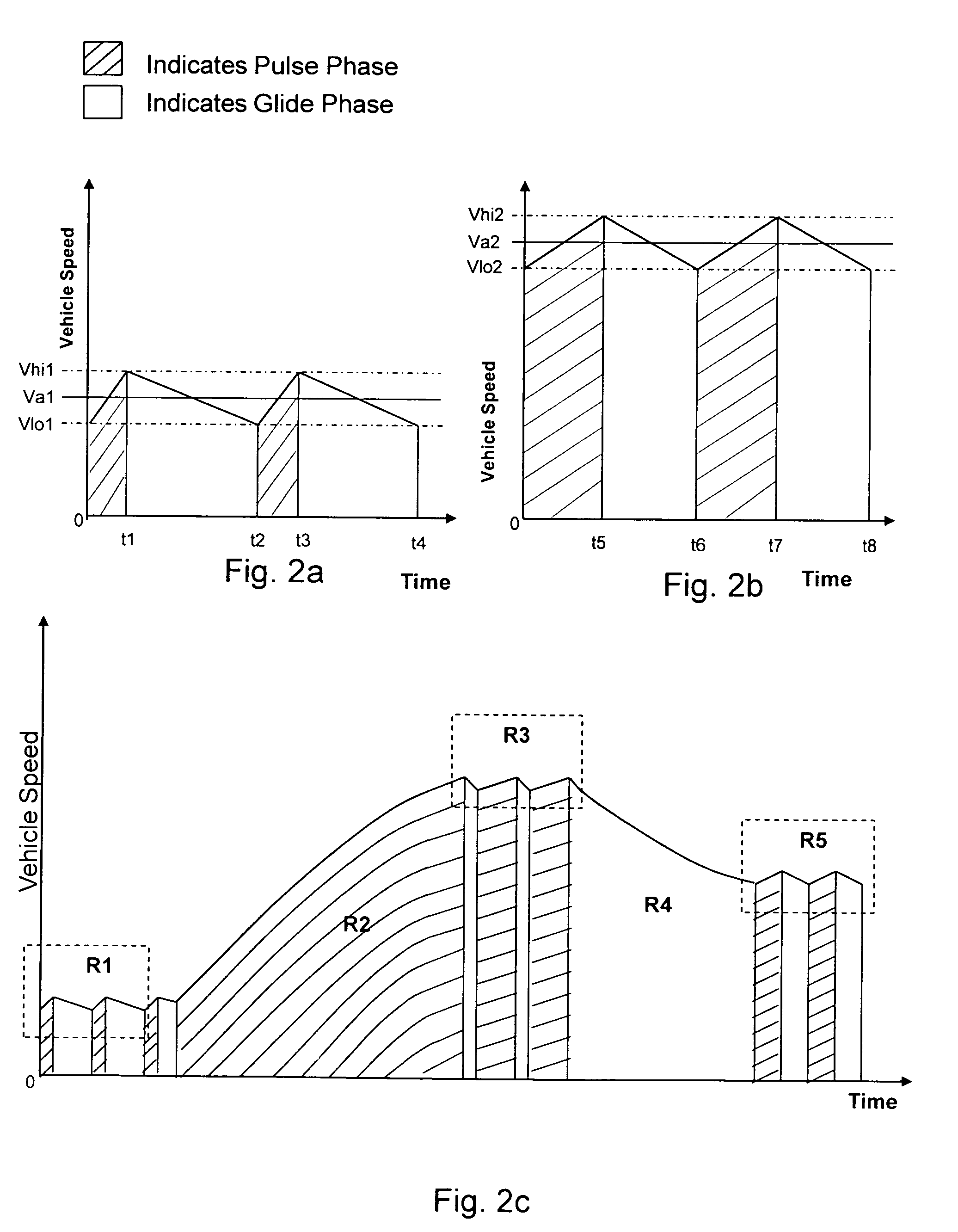Fuel saving method and device for vehicle
a fuel saving and vehicle technology, applied in the direction of machines/engines, liquid/fluent solid measurement, process and machine control, etc., can solve the problems of altering the amount of power the engine delivers, changing the p/f ratio, etc., to improve the usability of the system, reduce the impact of vehicle speed, and increase the range of vehicle speeds
- Summary
- Abstract
- Description
- Claims
- Application Information
AI Technical Summary
Benefits of technology
Problems solved by technology
Method used
Image
Examples
Embodiment Construction
)
[0042]Embodiment(s) of the present invention are described herein with reference to the drawings. In the drawings, like reference numerals represent like elements. In a most preferred embodiment, a power to fuel ratio is maximized, as explained below.
Maximizing the Power to Fuel Ratio
[0043]A combustion engine converts fuel into power. Generally, the amount of fuel flow to the engine is directly related to how much a driver presses on the accelerator pedal. In other words, the fuel flow rate is linearly proportional to throttle position in typical vehicles (though it need not be).
[0044]FIG. 1 shows how a power over fuel ratio (“P / F ratio”) plotted against fuel flow. From FIG. 1, it can readily be seen that the P / F ratio varies with the rate of fuel flow. The P / F ratio is a quantity derived from taking the real-time power produced by the engine (or engine load) and dividing it by the real-time rate of fuel flow (or air flow, which is proportional to fuel flow). The P / F ratio represen...
PUM
 Login to View More
Login to View More Abstract
Description
Claims
Application Information
 Login to View More
Login to View More - R&D
- Intellectual Property
- Life Sciences
- Materials
- Tech Scout
- Unparalleled Data Quality
- Higher Quality Content
- 60% Fewer Hallucinations
Browse by: Latest US Patents, China's latest patents, Technical Efficacy Thesaurus, Application Domain, Technology Topic, Popular Technical Reports.
© 2025 PatSnap. All rights reserved.Legal|Privacy policy|Modern Slavery Act Transparency Statement|Sitemap|About US| Contact US: help@patsnap.com



